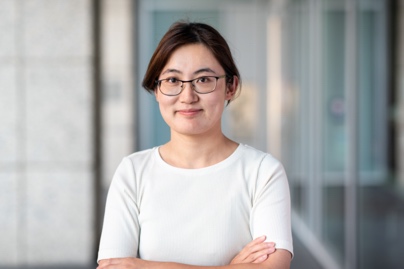Lili Zhu
email: lili.zhu @shsmu.edu.cn
Stem cells,organoids and retina disease
Education
2006-2012 Ph.D. Chinese Academy of Sciences, Shanghai Institutes for Biological Sciences (SIBS)
2002-2006 B.S. Shandong University
Professional Experience
2022.11- Investigator Shanghai Jiaotong University/Songjiang Research Institute
2017-2022 Postdoc, Scientist Gladstone Institutes/UCSF
2012-2017 Research Associate Newcastle University
Julie Li, the group leader of a research team, is a beneficiary of the National Talent Introduction Project and has been recognized as an Overseas Shanghai Youth Leading Talent. She earned her Bachelor’s degree in Biology from Shandong University and her Ph.D. in Stem Cell and Developmental Biology from the Institute of Health Sciences at the Chinese Academy of Sciences. Following her doctoral studies, she worked as a postdoctoral fellow and research scientist at Newcastle University in the UK and at the Gladstone Institutes affiliated with the University of California, San Francisco. In November 2022, she took on the role of group leader at the Songjiang Research Institute, affiliated with the Shanghai Jiao Tong University School of Medicine. Her primary research tools are pluripotent stem cells and organoids, and her work focuses on the development and pathology of the retina. With her research results published as the first author, including co-first, in leading international academic journals such as Cell Stem Cell, Circulation, Nature Communications, JCB, and EMBO Reports, she was awarded the Award for Scientific Excellence by the International Society for Stem Cell Research in 2020, among other honors.Laboratory link:https://www.x-mol.com/groups/zhu_lab
 Lili Zhu
Lili Zhu
Blinding eye diseases remain a major global health challenge in the 21st century. The leading causes of irreversible blindness are neurodegenerative, including diseases caused by death of retina cells. Our lab will focus on using human pluripotent stem cells to model retina diseases in my future research, particularly in three areas: (A) Generating of 3D laminated retinae (retinal organoids) from human pluripotent stem cells; (B) Modelling retina diseases with patient specific iPSCs; (C) Developing stem cell-based therapeutic strategies for retina disease.
-
Zhang Z#, Li C#, Li Q, Su X, Li J, Zhu L, Lin XJ, Shen J*(2023). Structure prediction of novel isoforms from uveal melanoma by AlphaFold. Sci Data10(1):513.

-
Zhu L, Choudhary K, Gonzalez-Teran B, Ang Y, Thomas R, Bruneau B, Steinmetz L, Krogan N, Pollard K, Srivastava D* (2022). Transcription factor GATA4 regulates cell type–specific splicing through direct interaction with RNA in human induced pluripotent stem cell–derived cardiac progenitors. Circulation 146:770-787.

-
Buskin A#, Zhu L# Chichagova V, Basu B, Mozaffari-Jovin S, Grellscheid SN, Johnson CA, Lako M* (2018). Disrupted alternative splicing for genes implicated in splicing and ciliogenesis causes PRPF31 retinitis pigmentosa. Nat Commun 9:4234.

-
Zhu L, Gomez-Duran A, Saretzki G, Jin S, Tilgner K, Melguizo-Sanchis D, Anyfantis G, Al-Aama J, Vallier L, Chinnery P, Lako M, Armstrong L* (2016). The mitochondrial protein CHCHD2 primes the differentiation potential of human induced pluripotent stem cells to neuroectodermal lineages. J Cell Biol 215:187-202.

-
Zhu L#, Zhang S#, Jin Y* (2014). Foxd3 counteracts NFAT-induced differentiation to maintain self-renewal of embryonic stem cells. EMBO Rep 15:1286-96.

-
Li X#, Zhu L#, Yang A, Lin J, Tang F, Jin S, Wei Z, Li J, Jin Y* (2011). Calcineurin-NFAT signalling critically regulates early lineage commitment in mouse embryonic stem cells and embryos. Cell Stem Cell 8:46-58.











 Location:
Location:
